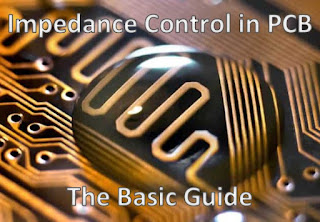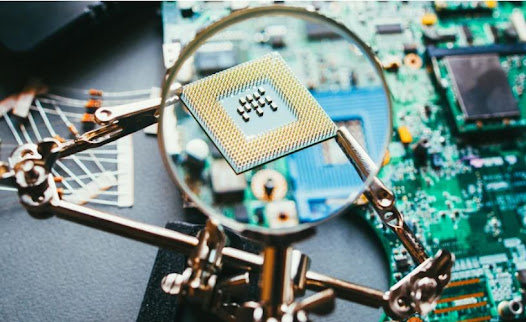High-frequency printed circuit boards (PCBs) stand out as the backbone of many modern technologies, enabling advancements in sectors ranging from telecommunications to medical devices. However, designing and manufacturing these intricate components come with a significant challenge: managing costs without compromising quality. As the demand for more sophisticated and reliable electronics grows, finding ways to reduce expenses while maintaining, or even enhancing, the performance of high-frequency PCBs has become a critical endeavor. This blog post delves into a variety of strategies that can help professionals achieve just that, offering insights into design optimization, material selection, and manufacturing processes that pave the way for cost-effective high-frequency PCB production.
Understanding High-Frequency PCBs
High-frequency PCBs are distinct in their need to perform reliably under stringent conditions, handling signals with frequencies typically above 500 MHz. They are pivotal in applications where minimal signal loss and maximum performance are non-negotiable, such as in radar systems, high-speed data transmission, and advanced communication networks. The choice of materials, design intricacies, and manufacturing techniques for these PCBs significantly influence their cost and performance.
One of the primary cost drivers in high-frequency PCB manufacturing is the material used. Traditional materials like FR4 often fall short in meeting the demands of high-frequency applications, leading to the adoption of more advanced, albeit expensive, materials like Rogers or Teflon. However, the trick lies not just in selecting the right material but in optimizing the entire design to mitigate costs without sacrificing quality.
Design Optimization for Cost Efficiency
The design phase holds the key to cost control in high-frequency PCB production. Effective design optimization can lead to significant cost savings by minimizing material wastage, reducing the number of layers, and simplifying assembly processes. Here are some strategies to optimize PCB design for high frequency:
- Minimize PCB Layers: Use advanced simulation tools to optimize the layout, potentially reducing the number of layers needed while ensuring signal integrity.
- Optimize Trace Geometry: Adjusting trace width and spacing can improve performance and reduce material use.
- Utilize Via-in-Pad Technology: Although initially more expensive, this technique can reduce space and layer count, leading to long-term savings.
- Efficient Use of Materials: Designing to minimize cut-offs and material waste can lead to significant cost reductions, especially when using expensive substrates.
By meticulously planning the PCB layout and employing strategies that reduce waste and complexity, designers can significantly lower the costs associated with high-frequency PCBs.
Material Selection and Cost Considerations
When it comes to high-frequency PCBs, the choice of substrate material plays a pivotal role in both performance and cost. While traditional materials like FR4 are cost-effective for low to mid-frequency applications, they fall short in high-frequency scenarios due to higher dielectric losses and signal degradation. As a result, designers often turn to specialized materials like Rogers, Teflon, or Isola, which, while offering superior performance, come at a higher price point.
- Rogers Material: Renowned for its consistent dielectric constant and lower loss, Rogers material is a go-to for high-frequency PCBs. Its thermal management properties are superior, reducing the risk of performance degradation over time. However, the cost can be several times that of FR4, making it crucial to assess whether the performance benefits justify the additional expense.
- Teflon (PTFE): With an exceptionally low dielectric constant and loss tangent, Teflon is ideal for ultra-high-frequency applications. But, its machining and handling require specialized processes, contributing to a higher overall manufacturing cost.
- Cost-Performance Analysis: When selecting materials, conduct a thorough cost-performance analysis. In some cases, a slightly more expensive material could offer significant performance benefits, leading to overall cost savings in the context of the product's lifecycle.
- Hybrid Approaches: Consider hybrid PCBs, which combine different materials in different board sections, balancing cost and performance by aligning material properties with the specific needs of each section.
Manufacturing Process Improvements
The PCB manufacturing phase offers ample opportunities for cost optimization without compromising the quality of high-frequency PCBs. Advanced manufacturing techniques can reduce waste, improve yield, and streamline production processes.
- Panel Utilization: Maximize the number of PCBs per panel to reduce waste. Efficient panelization can significantly decrease material costs, especially when working with expensive substrates.
- Automation: Implementing automated processes for aspects like drilling, plating, and inspection can enhance precision, reduce labor costs, and minimize errors, which are critical in the production of high-frequency PCBs.
- Lean Manufacturing: Adopt lean manufacturing principles to identify and eliminate waste in the production process. Continuous improvement practices can lead to significant cost reductions over time.
- Quality Control: Rigorous quality control is vital to prevent costly reworks or failures. Implementing in-line inspection and testing can identify issues early, reducing the cost implications of defects.
- Supplier Collaboration: Work closely with suppliers to optimize the manufacturing process. Suppliers may offer insights into cost-saving techniques or alternative materials that meet your specifications.
By thoroughly examining each stage of the material selection and manufacturing process, professionals can uncover numerous avenues for cost savings. The key is to maintain a balance, ensuring that cost-cutting measures do not compromise the essential quality and performance characteristics of high-frequency PCBs.
Supplier Relations and Cost Negotiation
Navigating the landscape of supplier relations and cost negotiations is crucial for achieving cost-effective solutions in high-frequency PCB manufacturing. Establishing strong partnerships and employing strategic negotiation tactics can unlock potential savings and access to higher-quality materials and services.
- Strategic Supplier Selection: Choosing the right suppliers is about more than just the lowest cost. It involves evaluating their expertise in high-frequency PCBs, their quality assurance processes, and their ability to provide consistent, reliable materials and services. Look for suppliers with a proven track record in your specific PCB requirements.
- Long-Term Partnerships: Develop long-term relationships with suppliers. Suppliers are more likely to offer better prices and terms to loyal customers. Such partnerships can also lead to improved service levels, priority support, and access to valuable industry insights and innovations.
- Volume Commitments: If possible, leverage volume commitments to negotiate better terms. Suppliers often offer discounts for bulk purchases or long-term contracts, which can significantly reduce material costs.
- Negotiation Strategies: When negotiating, be clear about your requirements but also understand the supplier's perspective. Be prepared to discuss various terms, not just prices, such as payment terms, delivery schedules, and after-sales support.
- Collaborative Cost Reduction: Engage with suppliers to identify cost-reduction opportunities. They might have suggestions for alternative materials, design modifications, or process improvements that can lower costs without compromising quality.
- Transparency and Communication: Maintain open lines of communication with suppliers. Transparent discussions about your needs and challenges can lead to innovative solutions and mutual benefits.
- Continuous Market Review: Keep abreast of market trends and supplier offerings. Regularly reviewing your supplier choices and staying informed about new materials or technologies can ensure you're always getting the best value.
Conclusion
Designing and manufacturing high-frequency PCBs doesn't have to break the bank. By employing strategic design optimizations, making informed material choices, improving manufacturing processes, and fostering strong supplier relationships, businesses can significantly reduce costs while maintaining or enhancing the quality of their high-frequency PCBs. Embracing these strategies not only leads to immediate cost benefits but also positions companies for sustainable success in the competitive electronics market.
Call to Action
Are you ready to optimize your high-frequency PCB production for better cost efficiency without compromising on quality? Review your design and manufacturing processes, consider the material selections and supplier strategies outlined, and take the first step towards more cost-effective high-frequency PCB manufacturing. For more insights or assistance, feel free to contact the team of experts. alternatively, proceed to read more about Flexible High-Frequency PCBs.











